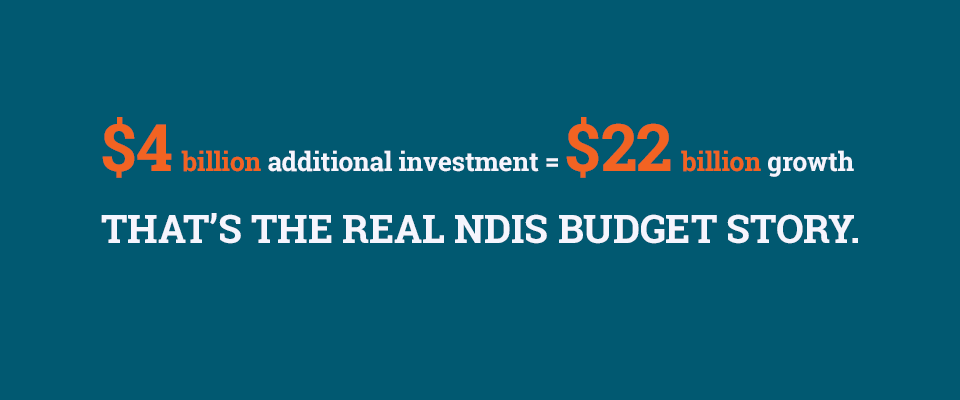What’s the Budget fuss?

Periodically we hear, “The sky is falling, the sky is falling” from various media outlets and bean counters in apparent concern about the skyrocketing and unbudgeted costs of the NDIS.
Inevitably they miss the critical reasons why the NDIS actually makes economic sense. Let’s review the facts:
The cost of disability support now
Reports on the high costs of the NDIS continually ignore the billions of dollars governments spend right now on disability supports and services.
Not only are billions being spent, but the current system is so appallingly inadequate that most people with disability don’t actually get the support they need. People do not have the choice and control they deserve and we know many people and families are in crisis because of it.
The NDIS will provide a new system where the funding is personally targeted, allowing people to use it exactly how they need it. This alone will save millions in mis-directed revenue while improving the lives of people with disability and their families.
The NDIS creates an employment boom
By better supporting people with disability it is expected that when the NDIS is fully implemented, somewhere between 24,000 and 38,000 people with disability who haven’t had access to work will have that opportunity.
This has the potential to increase GDP by a whopping $7-$11billion. Impressive! And it means that people who have always wanted to work, can.
Carers too will have employment opportunities as they are relieved of the pressures of round-the-clock care; mums who gave up work to be full time carers will be able to rejoin the workforce. An estimated $11billion will be added to the GDP just from the tens of thousands of carers back in the labour market.
That’s more tax in the system, less welfare dependency and an estimated additional $22billion increase in GDP.
On the other side of the coin, the introduction of the NDIS is expected to double the current disability workforce – creating up to 70,000 new jobs. That’s a massive contribution to Australia’s employment growth at a time when traditional markets such in sectors like manufacturing and mining are in decline.
Check out this infographic we put together last year which highlights the numbers: https://everyaustraliancounts.com.au/ndis-makes-economic-sense/
All according to plan
The rehashing of the costs of the NDIS as though they are new and alarming also ignores the fact that we’ve been through a very thorough process to ensure the NDIS is sustainable for the long term.
The Productivity Commission reviewed the numbers and provided a sustainable roadmap for its introduction. An increase in the Medicare Levy which started collecting in July 2015 is helping pay for it. Trial sites around the country are showing that the scheme is on budget and sustainable, most states have now signed their agreements for the full roll out of the NDIS and we’re expecting more good news on this front soon.
Our governments have had the figures and forecasts for years now and they are planning for its delivery now and in the future.
The reform of our time
To be clear: the sky isn’t falling. The NDIS is on budget as forecasted and all sides of governments have committed to its delivery.
It’s the reform our nation has to have and its time is now. The cost of doing nothing is socially and economically huge and we are committed to seeing it through.

Join the conversation